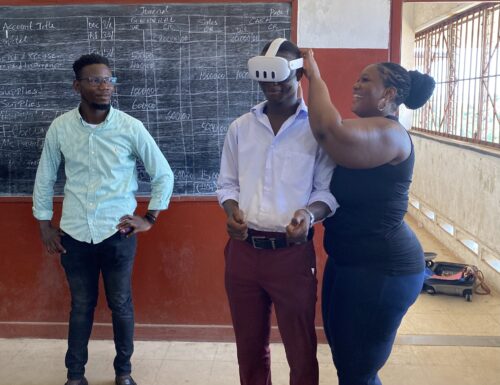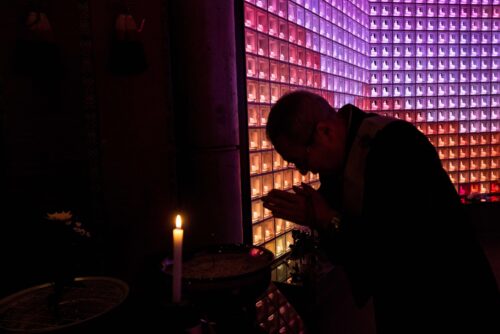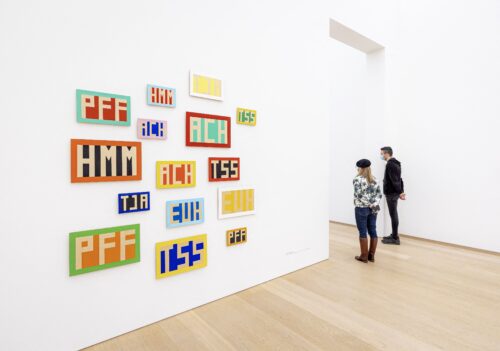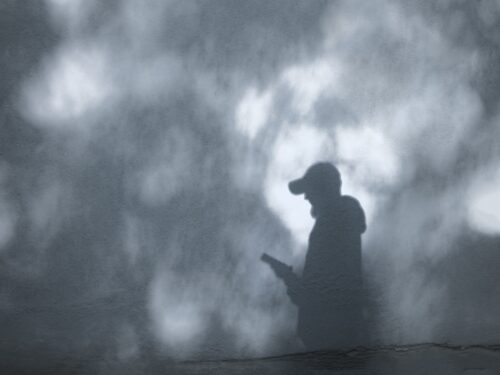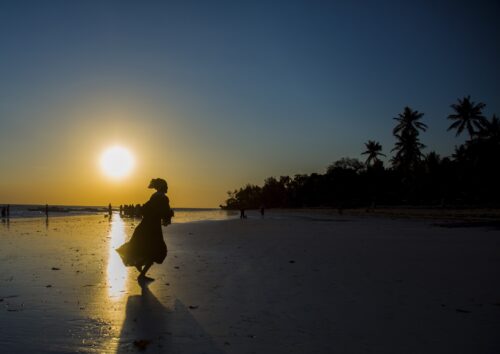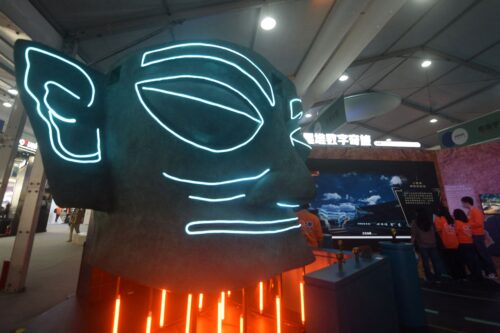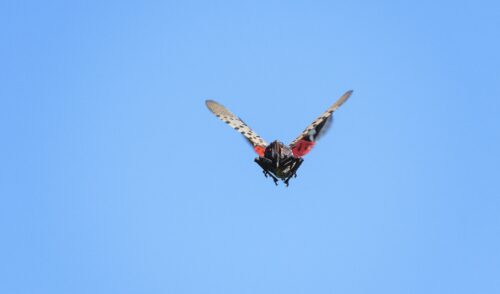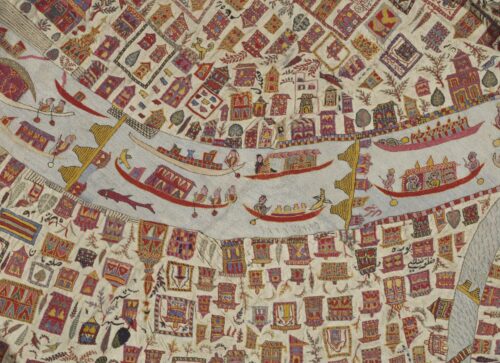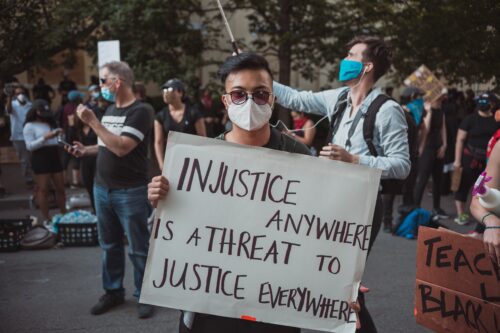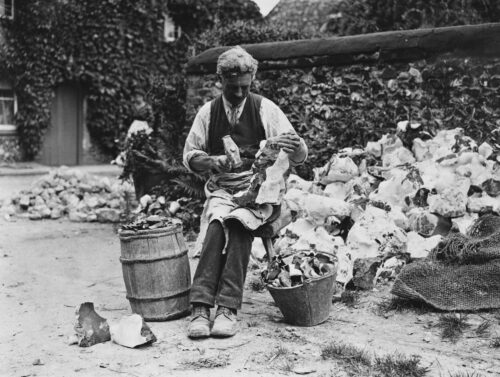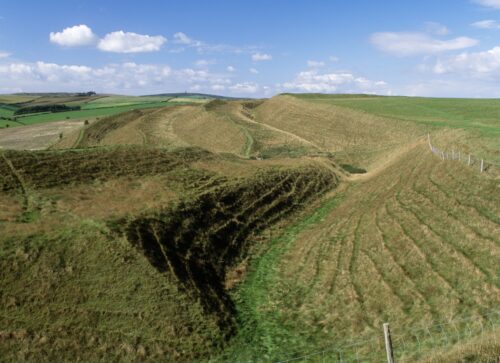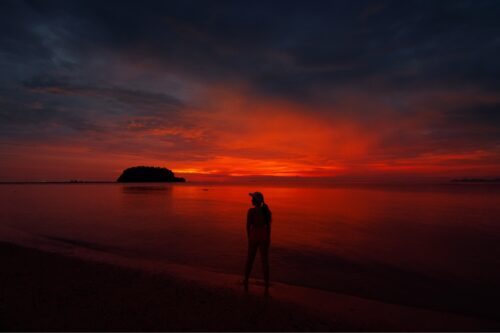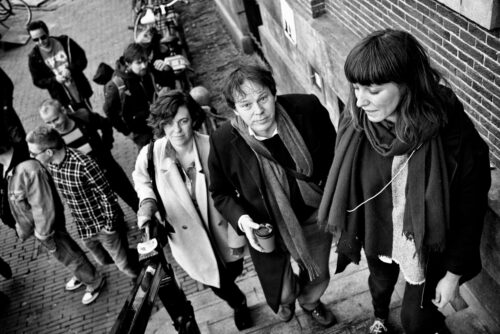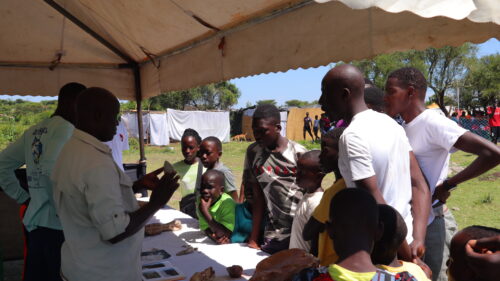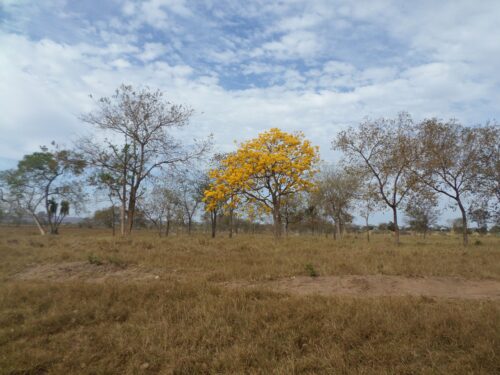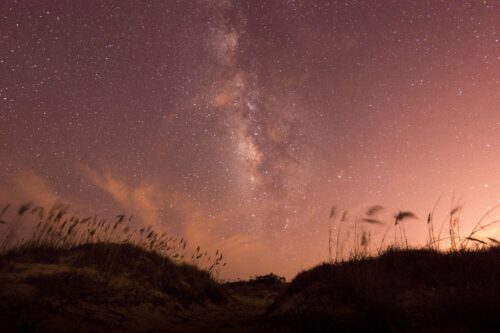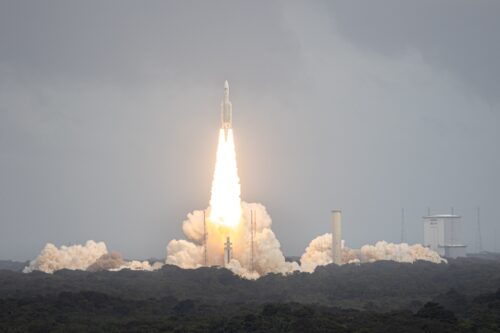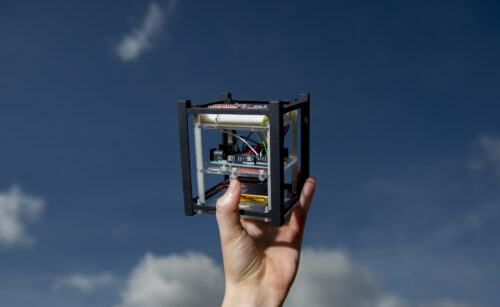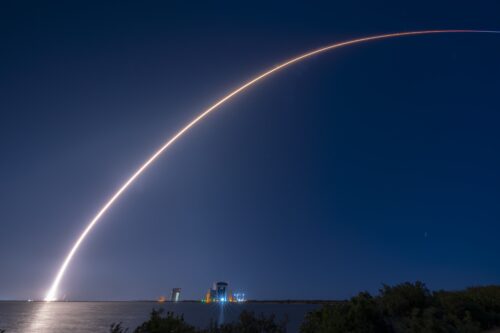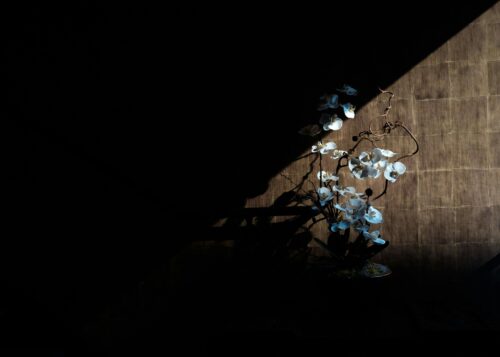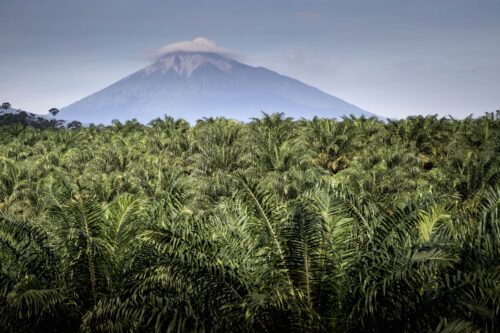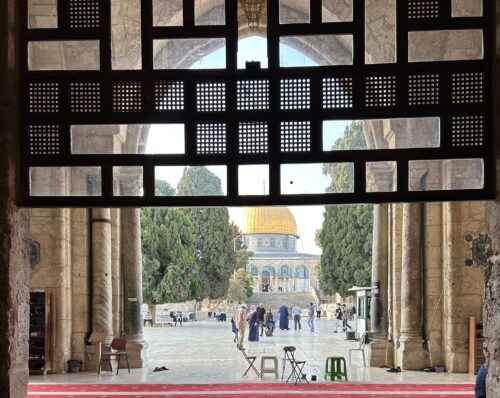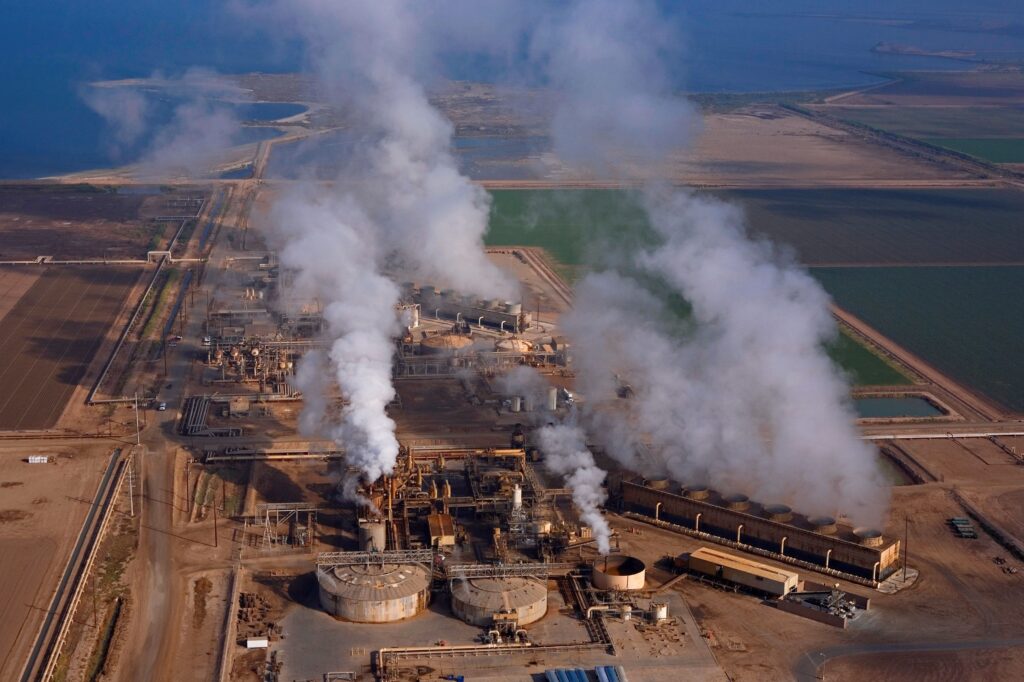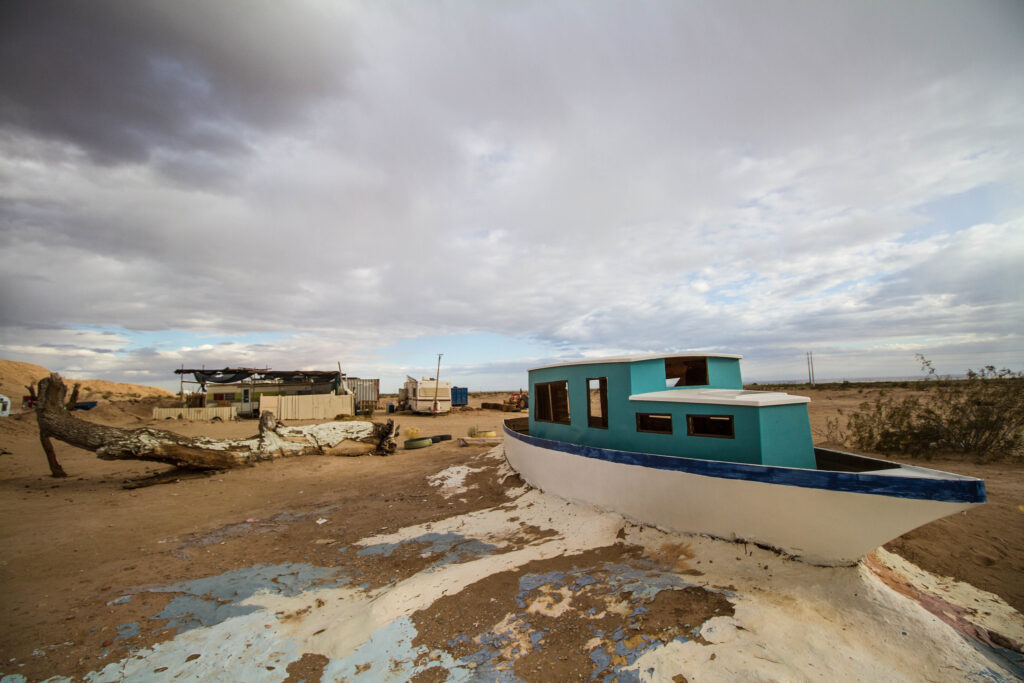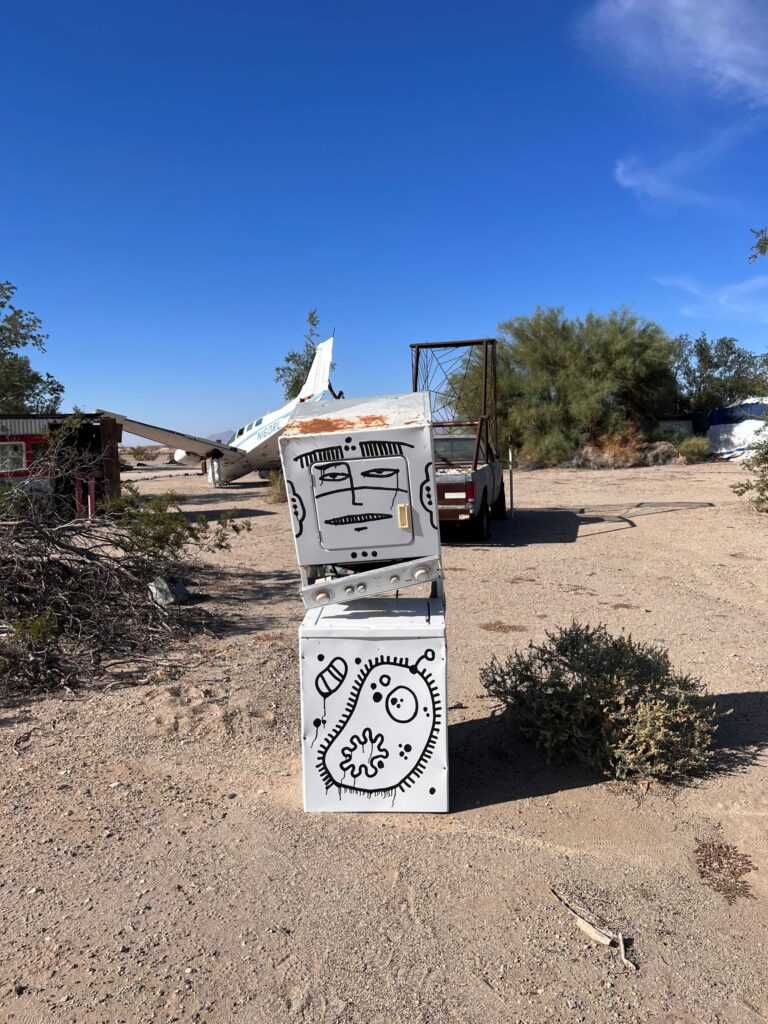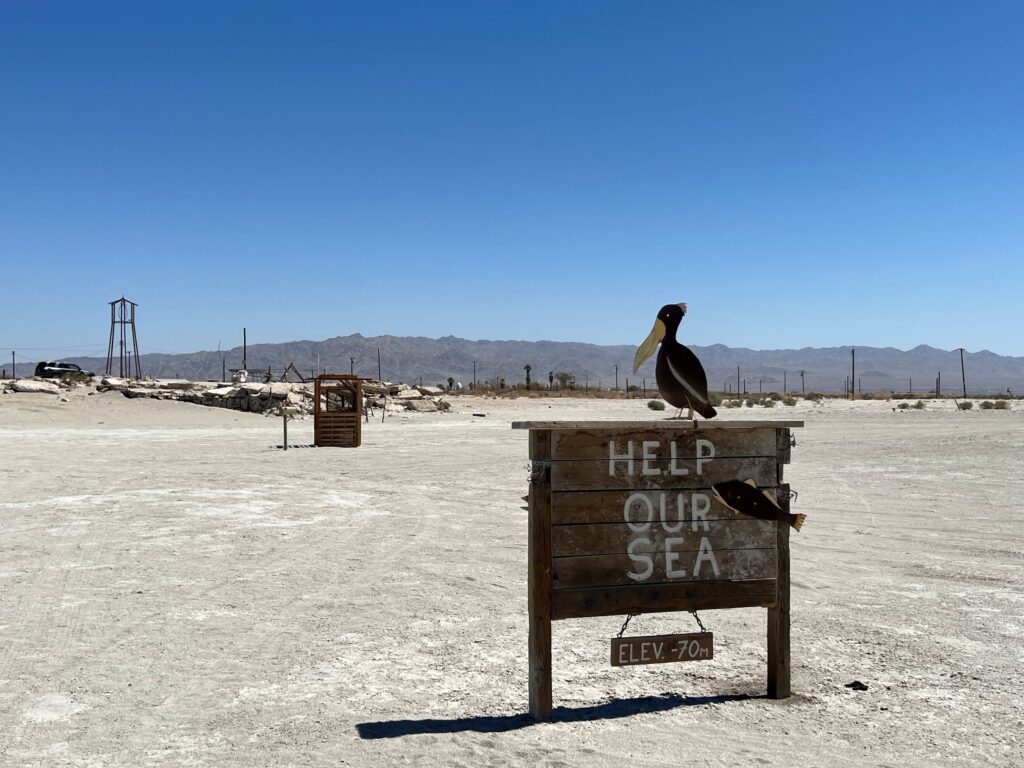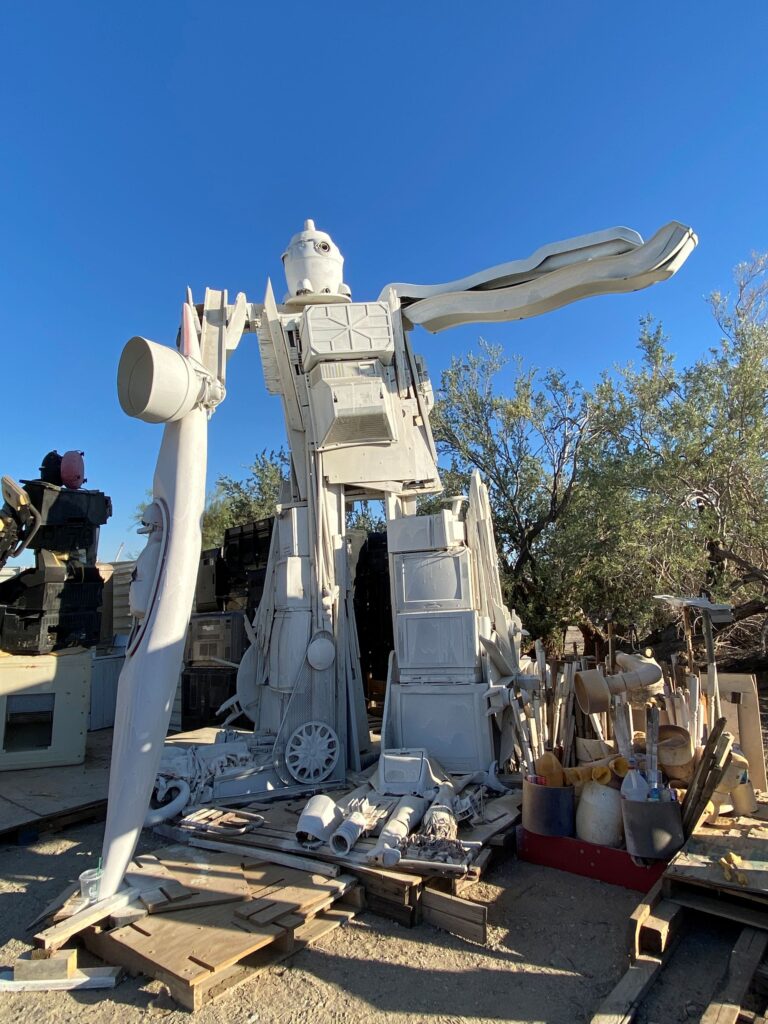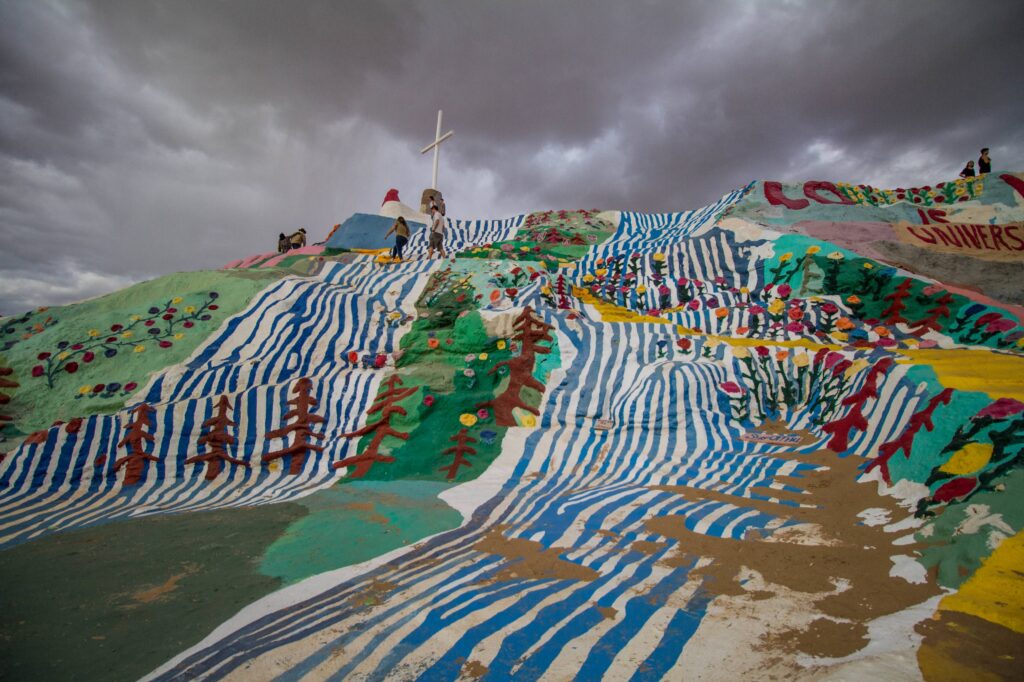Can Art Save the “Post-Apocalyptic” Salton Sea?
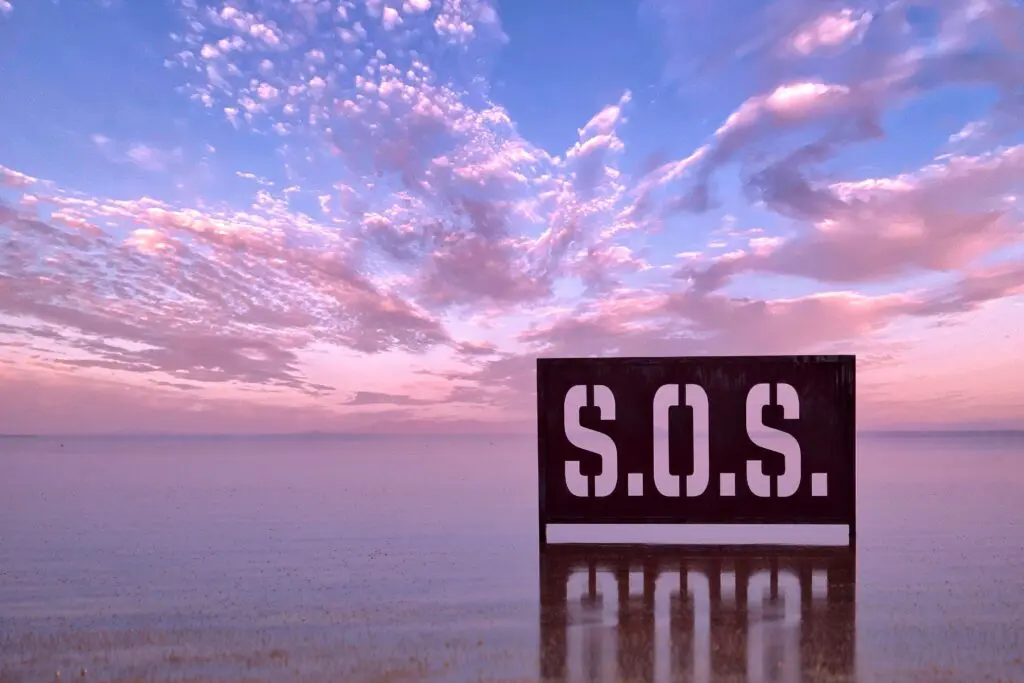
Dusk at the Salton Sea turns the Chuckwalla Mountains rosy shades of sepia and gold. A warm breeze lifts the spicy scent of creosote off the desert floor. At the nearby community of East Jesus, an array of outdoor installations, art cars from Burning Man, and smaller assemblage artworks twinkle in the fading light. This idyllic scene near California’s largest lake belies its darker image as an alleged wasteland and a portent of environmental catastrophe.
The Salton Sea, located in Southern California’s Imperial Valley, has long been a cautionary tale of climate disaster, corporate greed, and political inaction. The plight of its residents has historically been ignored or erased from broader political discourse. Press releases, news articles, and blogs describe the Sea’s communities as “tired,” “dilapidated,” “abandoned,” and even “post-apocalyptic.”
As recently as 2020, renewable energy companies have framed the Sea’s economic and environmental decline as an opportunity. The area harbors up to 18 million metric tons of extractable lithium, a key ingredient in rechargeable batteries for electric vehicles, electronics, and renewable energies such as solar and wind. Elected officials have dubbed the region “Lithium Valley” (a play on Silicon Valley) to attract investors, geothermal energy companies, and lithium mining companies.
However, Imperial Valley residents and critics worldwide are aware that these green tech solutions alone will not head off a global environmental collapse. Instead, many Salton Sea residents see a different kind of opportunity in this “dilapidated” place.
Contrary to the area’s negative characterizations, residents are engaging in inspiring work toward environmental and social justice. They’re creating art and experimenting with sustainable technologies to shine a light on the region’s environmental devastation. They’re turning inward toward community-based economies of sharing and material reuse that foster resilience.
As an archaeologist interested in the perseverance of life in “ruined” places, I came to the Salton Sea to learn about residents’ creative solutions for adapting to the region’s challenges. What I found was a resolute and resourceful community inventing an alternative vision of a sustainable future.
A HISTORY OF ENVIRONMENTAL VIOLENCE
On the eastern shore of the Salton Sea, Bombay Beach is beautiful and otherworldly. Intense heat creates mirages that ripple above the bright white sand. Sunlight glints off the lake. Around 400 species of migratory shorebirds feed in the waters.
But this lake is also a health hazard. Desert landscapes have long been used as sacrifice zones, such as the U.S. government testing more than 900 nuclear weapons in Nevada. In part because the Salton Sea is often viewed as being “in the middle of nowhere,” its residents (both human and more-than-human) face extreme impacts of environmental toxins and chemical waste.
In 1853, a geologist named William Blake visited this low-lying area and envisioned turning it into lush farmland to attract white settlers and farmers. A series of irrigation canals were constructed to control and divert the nearby Colorado River. From 1905 to 1907, an irrigation canal failed; it permanently flooded the sink, creating a lake thereafter called the Salton Sea. The area became a popular vacation destination for Los Angeles residents and celebrities who were attracted to the Sea’s recreation opportunities.
By 1929, California had deemed the Salton Sea a sump for irrigation runoff and exempted the anthropogenic lake from the state’s environmental regulations. In the 1970s, the Sea became increasingly saline, depleting oxygen in the water and precipitating massive species die-offs. More recently, the Imperial Irrigation District transferred water from farmland to urban areas, decreasing the Sea’s main source of water: agricultural runoff. This has hastened the evaporation of the Sea, exposing residents to toxic dust particulates and pesticides. Imperial County now has some of the poorest air quality in the country.
Despite this public health emergency, people living in local communities argue that their homes are worth saving. Residents, artists, and activists are developing innovative strategies to draw attention to the decades of state and federal government inaction that have failed to address threats to life posed by landscape degradation, drought, and climate change. They’re using Bombay Beach and the Sea’s ever-receding shoreline as their canvas for activist art.
ART IN THE APOCALYPSE
Shipping containers painted in bright, intricate, geometric patterns confront visitors in town, sending a message that waste can be repurposed. Other assemblage art along the shore conveys a more serious, political overtone meant to inform viewers of the environmental devastation of the Sea. A “water wise garden” made of driftwood derides the California Imperial Irrigation District’s damaging water transfers. Tesla charging stations made of repurposed materials dryly promise to save us all from planetary collapse. White wooden pelicans decorated with the text “Help Our Sea” plead viewers to take notice of the vulnerable species that call the lake home.
Further south, approximately 10 miles east of the shore, sits Slab City, named after the concrete slabs left behind when a military training facility located here was decommissioned. This off-grid, alternative lifestyle community is self-described as the “last free place.” The majority of its 500 to 1,000 permanent and semi-permanent residents—mostly retirees, veterans, artists, musicians, low-income individuals, and snowbirds—are squatting on parcels of land the California State Lands Commission owns.
East Jesus, a community on the northwestern edge of Slab City, is fostering sustainability-focused art using found and repurposed items. East Jesus (an idiom for “middle of nowhere” without any religious connotations) was formally established in 2007 by the late Charlie Russell on Slab City’s communal landfill. Russell imagined East Jesus as a generative space for creating a “world without waste,” where discarded materials could be re-enlivened through habitable art and installations. At East Jesus, “the art and the living spaces are inextricable; they are intimately connected,” says longtime resident, caretaker, and curator Jenn Nelson.
East Jesus residents, artists, and volunteers—known as “Jesuits”—repurpose materials to develop novel solutions for maintaining food, water, and energy security without compromising environmental and community well-being. These sustainable strategies are meant to address the challenges of living in a desert with no municipal services such as electricity, trash disposal, and a public water supply.
Experimental design projects at East Jesus have implemented arid-adapted agricultural systems and sustainable forms of energy generation. For example, residents grow food through hydroponic farming to minimize water usage. Food waste is fed to resident chickens or composted alongside human waste, or “humanure.”
Residents have also experimented with reusing discarded, industrial backup batteries for energy storage and photovoltaic solar panels that have reached the end of commercial use. Habitable structures are made from Styrofoam and straw bales covered in mud and straw bricks to provide insulation against the summer heat. Other structures include mobile homes and trailers that were donated to East Jesus by family members whose owners passed away, thus extending the lives of these useful items.
Resident “Caddy” (a pseudonym) says East Jesus isn’t necessarily meant to offer a blueprint for other off-grid sustainable communities. “The environmental conditions in this particular desert would make it difficult to transfer these specific technological adaptations elsewhere.” Rather, he says, “we hope to educate people and get different ways of living into the zeitgeist.” He would like to show visitors that there are more environmentally responsible possibilities for building homes and developing food and water systems.
In 2014, East Jesus formed the Chasterus Foundation, a 501(c)3 nonprofit to provide a safe, dedicated space for artists and art, as well as a permanent home for traveling or temporary art installations. Today East Jesus is Imperial Valley’s only formally recognized museum. The Chasterus Foundation is also committed to developing “reuse before recycle” programs.
While Russell’s art initially utilized waste and cast-offs from the Slab City community, East Jesus now solicits donations to keep up with the sheer number and size of building projects and artistic ventures. The community’s “bone yard” consists of an immense expanse of donated and found objects that have roughly been arranged into piles according to material type and size. The bone yard provides a cornucopia of raw materials for resident and visiting artists, as well as important source material for building projects and to meet residential needs.
California has a long history of developing repurposed “junk” into art for social commentary. Post-WWII, the development of synthetic materials and the mass production of waste materials broadened the possibilities for using discarded materials in art. Kenny Irwin, an artist at East Jesus who designed the permanent installation “Robolights” in Palm Springs, combines junk in beautiful, imaginative, and remarkable ways. His whimsical sculptures often include giant robots in movement that are created from scrap metal, wood, television sets, water heaters, kayaks, and vacuum cleaners.
Notwithstanding the caprice and eccentricity of his art, there is a gravitas to Irwin’s work. He says creating his art with “waste” extends beyond mere convenience. Irwin believes people have an ethical responsibility to keep waste out of landfills and use it in generative ways. “The Earth is a closed system,” he says. “There is nowhere for this stuff to go.”
Bruce Boyd, another artist at East Jesus, similarly creates with repurposed objects, but he chooses objects for their size, color, patina, and orientation. Some of his assemblages, made from rusted steel and other discarded materials, recall small-scale cityscapes. His art is meticulous and methodical, with a message. His work “Sad Dryer” is a commentary on merely surviving the devastating forces of late-stage capitalism.
As Salton Sea’s artists and residents contest the destructive forces of fast consumerism, they articulate commitments to sustainable modes of living in and with the Sea’s “ruined” landscape.
THE FUTURE OF THE SALTON SEA
California estimates the Imperial Valley could produce up to 600,000 tons of lithium annually. Companies including Berkshire Hathaway Renewables, EnergySource, and Controlled Thermal Resources are racing to profit off the Sea’s lithium-rich geothermal fields. Since the companies propose to use preexisting infrastructure to extract lithium from the Sea’s deep geothermal brines, they claim the environmental impacts of mining will be negligible.
But these high-tech schemes to “fix” and reinvest in “Lithium Valley” have proved a rallying point for contentious public and political discourse. Imperial Valley residents have expressed concerns regarding the impacts of lithium mining. It takes 500,000 gallons of water to extract one ton of lithium. Using scarce Colorado River water for lithium processing could cause devastating water shortages in a region already suffering from drought and dwindling water.
Residents are also worried about the human health impacts of lithium mining waste, which includes arsenic, barium, and lead. Environmental impact reports provide information from industry-sponsored studies, which have done little to assuage the concerns of Imperial Valley communities.
As industries try to use the region as fuel for never-ending economic growth, the communities of the Salton Sea are embodying a more sustainable strategy. Precisely because governments have historically ignored this area and media outlets have dismissed it as ruined, the Salton Sea provides unique opportunity zones for creative experimentation. As Caddy says of East Jesus, “Because no one wants to live here, we have 30 acres.”
In this otherworldly canvas, residents are exploring alternative visions of society than those offered by capitalist development programs. They are showing that “living otherwise” can entail low-tech, renewable solutions that are beautiful in their austerity and expression.
